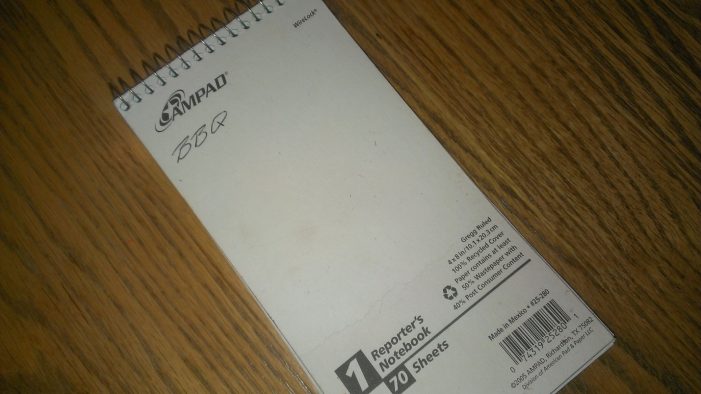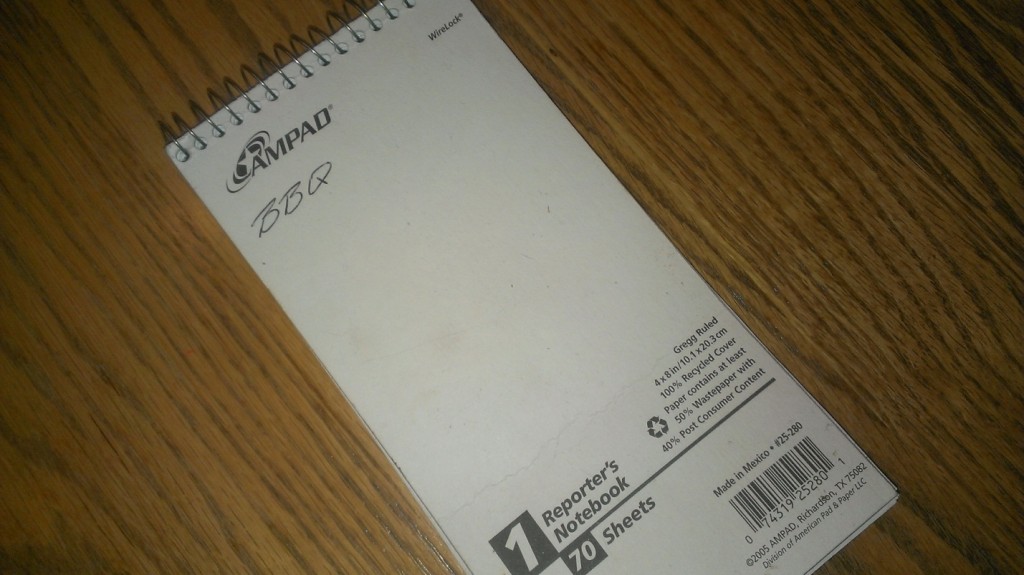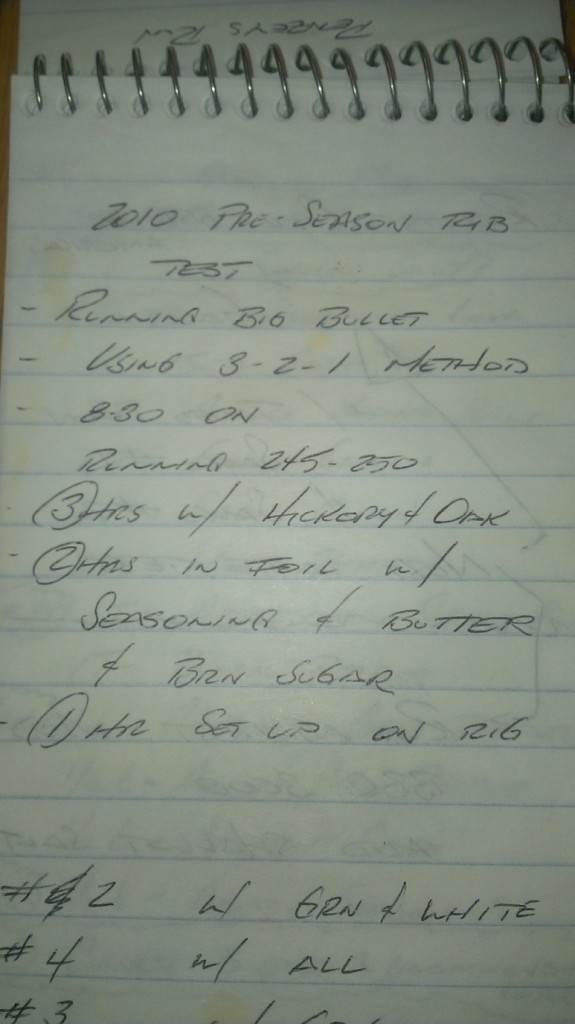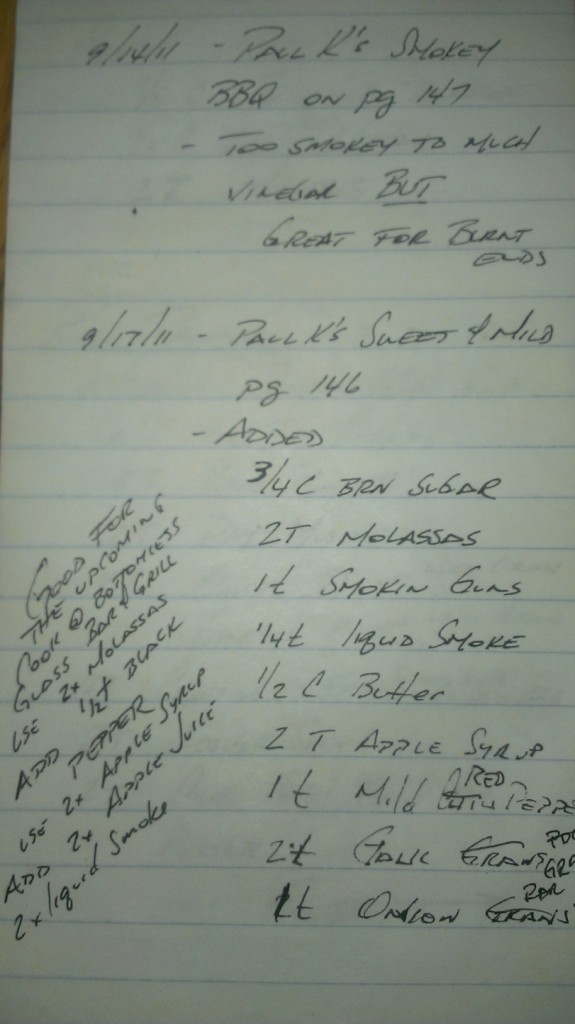Developing the “Perfect Recipe” – A New Year’s Resolution, Perhaps?
There is a lot to be said for those folks out there that have their own recipes, particularly those that have enough recipes to open a top notch restaurant. How did they get to the point where they had their perfect recipe? I’m no master chef but it is easy enough to realize that first and foremost, one must document the makings of their perfect dish, rub, cocktail or dessert.
Now this seems like it may be a boring read, quite frankly if you are content with using someone else’s recipe, always, this may not be for you. However, for those yearning to develop the most succulent recipe ever, continue reading. I’m not going to give you any recipes. I’m going to remind you of the most elementary aspects of doing anything perfectly.
Documentation is essential for recipe development. It is essential to document the recipe, the process of preparing the dish, the cooking process and any improvements made to it. If you have an existing recipe that you are trying to perfect it is important to document it “as-is.” Once this is done you can start modifying the recipe and document the “improvements” you made to it. Or so you hope. If a modification is made that didn’t end up being an improvement, you have documented that the recipe was not improved by the change made. Without this documentation there is a good chance you could make the same mistake again sometime in the future. Particularly if you work on your recipes endlessly like our team does.
In our time as competition BBQ cooks we have documented every aspect of the process at some point in time. We’ve got equipment checklists, competition schedules, tracking spreadsheets and any other type of documentation one could dream of. The most important documents we have are the recipes to our secret sauces and rubs. For instance, one of our teammates has been working on his perfect BBQ sauce recipe for just over 5 years now. Personally, I’ve been working on the perfect rib rub for almost a year and a half. How do I fine tune my rib rub recipe? Every contest, a rack or two gets the secret rub used on it and it is compared to what we are currently successful with. Each time a modification or two is identified and documented for the next rib cook.
When I decided to finally refine my rib rub recipe it was a bit difficult to know where to start. As a team we’ve used countless recipes from various cookbooks and websites. It is easy to think that an award winning recipe is going to be a great start to building your recipe. There are many “award winning recipes” available on the web and most all of them would be a good starting point. When I began this quest I spent about 4 or 5 hours reviewing what we had done in the past and to no reward. I then decided to start from square one after seeing that the recipes I had previously run were all relatively the same, all yielding the same results which were not much to write home about. The funny thing, however, is that I could have easily posted on our blog: “Award Winning Rib Rub” because one of them had pulled a second place finish in a local contest. The sad truth; this recipe failed to perform for the remainder of the season. After accepting the fact that the rubs we had used in the past weren’t worth starting with I pulled out every BBQ cookbook I had and started reading. I narrowed my search down to three recipes that I thought sounded good. From this point I simply compared the recipes and took bits and pieces from each to develop my starting point. From this very moment, I was documenting. I documented my starting point. Once documented and the seasonings were combined I began making modifications. Each time I modified, I documented. Also, you only want to modify one aspect of a recipe at a time. If you make multiple modifications you may have a hard time knowing which ingredient caused the improvement or error.
Even if you are using a “canned” off the shelf seasoning and rub as your foundation, it is still critical to document what you are using and the quantity used. There are still times where we use “canned” ingredients as our stepping off point. This is perfectly acceptable and beneficial since the consistency of the store brands is typically exceptional. For example, you know Lawry’s seasoning salt is going to taste the same each time you buy it.
With regards to seasonings the following should be documented.
- Specific brand of the seasoning i.e. Tone’s, Penzey’s, G&H Sugar, etc.
- Whether the ingredients are granulated or powdered.
- If using Cayenne Pepper; it is offered in various levels of heat or spiciness as indicated by the Scoville Units on the label. If your brand doesn’t have this shown, just continue using the same brand.
- If using brown sugar, is it light brown or dark brown.
- Anything and everything you can document to reign supreme.
An equally important aspect of the perfect recipe is documentation of the actual cook itself. This document is obviously different than a recipe, but without it the consistency in how well the dish is cooked could be sacrificed. There aren’t as many factors that impact recipes when cooking indoors but as soon as you step outside, the temperature, wind, humidity and even the sun can impact the outcome of your dream dish. As most of you can recall, there is nothing worse than being excited about cooking your favorite dish for guests only to be disappointed with it. In these situations, there are so many other activities happening in preparation for the guests arrival that it almost certain something will be overlooked during the cooking process. Without documentation your perfect recipe will never happen.
Things to consider for documentation of the cooking process:
- The outside temperature and humidity
- The type of charcoal you are using and how much.
- How long it takes your cooker to get up to temperature.
- If you will need to add more charcoal during the cook, when do you need to add it?
- If you wrap your food in foil or move it towards or away from the heat source; how long into the cook do you do so?
Now that we’ve covered the ingredients and cooking process documentation, you must document your thoughts on how the recipe tasted and how well it cooked. If you think it tasted too salty, make a note to reduce the salt. If you thought it could use some more heat, write it down for next time. Perhaps there wasn’t enough smoke taste, or the finished product was tough or overcooked. If you don’t document your findings you may never refine your recipe.
Unless you want to eat the same dish over and over for weeks on end, perfecting a recipe can easily take a year. If you have the mind of a genius perhaps you wouldn’t have to document anything. If you are like most people, a jotted down note about something will easily help you remember something that you did a year or two ago.
Written by Ryan Amys – BBQ Revolution, LLC – Rib Cook, Hot Grill on Grill Action BBQ Team





You must be logged in to post a comment Login